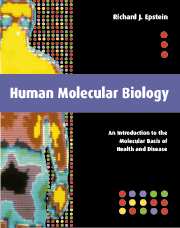Book contents
- Frontmatter
- Contents
- Preface
- Acknowledgements
- Read me first …
- Glossary
- Dedication
- Introduction: A disease for every gene?
- I From molecular biology to human genetics
- II From molecular genetics to human biochemistry
- III From molecular biochemistry to human cell biology
- 11 Signal transduction
- 12 Bioactive lipids and inflammatory cyotkines
- 13 Hormones and growth factors
- 14 Hemopoietins, angiogenins, and vasoactive mediators
- 15 Cell cycle control, apoptosis, and ageing
- IV From molecular cell biology to human physiology
- V From molecular physiology to human molecular biology
- Index
12 - Bioactive lipids and inflammatory cyotkines
Published online by Cambridge University Press: 01 June 2011
- Frontmatter
- Contents
- Preface
- Acknowledgements
- Read me first …
- Glossary
- Dedication
- Introduction: A disease for every gene?
- I From molecular biology to human genetics
- II From molecular genetics to human biochemistry
- III From molecular biochemistry to human cell biology
- 11 Signal transduction
- 12 Bioactive lipids and inflammatory cyotkines
- 13 Hormones and growth factors
- 14 Hemopoietins, angiogenins, and vasoactive mediators
- 15 Cell cycle control, apoptosis, and ageing
- IV From molecular cell biology to human physiology
- V From molecular physiology to human molecular biology
- Index
Summary
Dietary fats and oils – the lipids best known to most of us – get a bad press. As it happens, endogenous lipids are essential for normal cell behavior: partly on account of their hydrophobic properties, which make them essential membrane constituents, and partly by virtue of their signaling abilities. In this section we discuss how the hydrolysis of lipid-containing membrane constituents regulates the production of molecules that mediate inflammatory responses.
Lipid signaling
Lipids transduce signals from membranes
Although widely regarded as inert, lipids are in fact potent mediators of signal transduction. A striking example is the lipid A domain of bacterial lipopolysaccharide (LPS; also known as endotoxin) – a modified membrane phospholipid in Gram-negative organisms that contributes to septic shock (p. 299). A serum LPS-binding protein presents the endotoxin molecule to CD14-expressing monocyte-macrophages and neutrophils, leading to nonspecific immune recognition followed by activation of blood clotting and host defenses. Non-LPS immunogenic microbial lipids include lipoteichoic acid and lipoarabinomannan.
Lipid signaling molecules often have composite structures that include sugar and/or protein regions. The latter may include SH2 domains, which provide a mechanism for integrating lipid signaling with other biochemical response pathways. Signaling molecules may thus be formed from a variety of membrane-associated lipids including phosphatidylinositol, PIP2, phosphatidylcholine (lecithin), and phosphatidic and lysophosphatidic acid. The most abundant of these lipid phosphates is the monophosphorylated phosphatidylinositol-3-phosphate (PIP), which recruits endosomal and signaling proteins to the membrane via its interaction with a specific PIP-docking motif termed a FYVE domain.
- Type
- Chapter
- Information
- Human Molecular BiologyAn Introduction to the Molecular Basis of Health and Disease, pp. 288 - 311Publisher: Cambridge University PressPrint publication year: 2002



